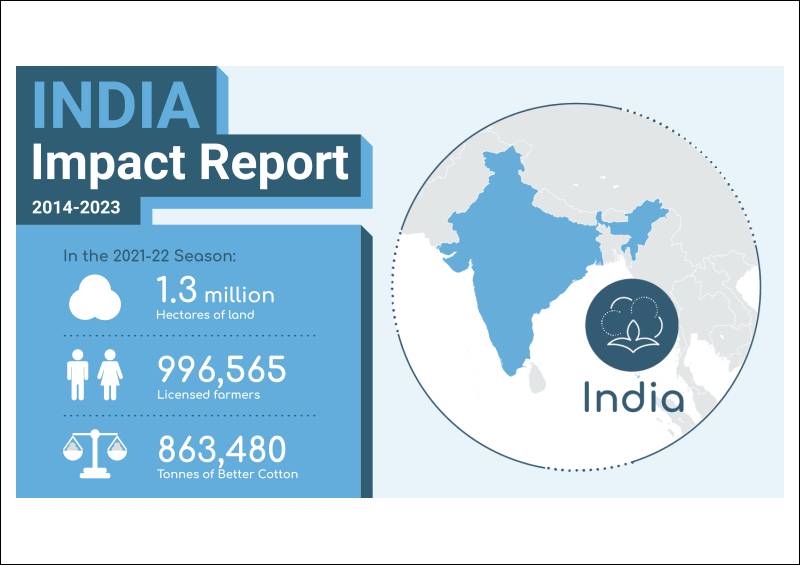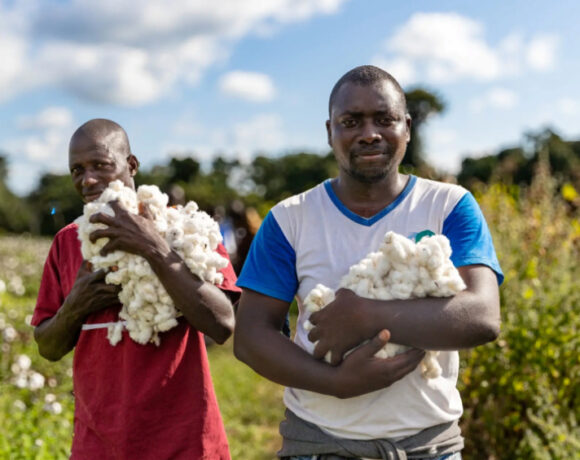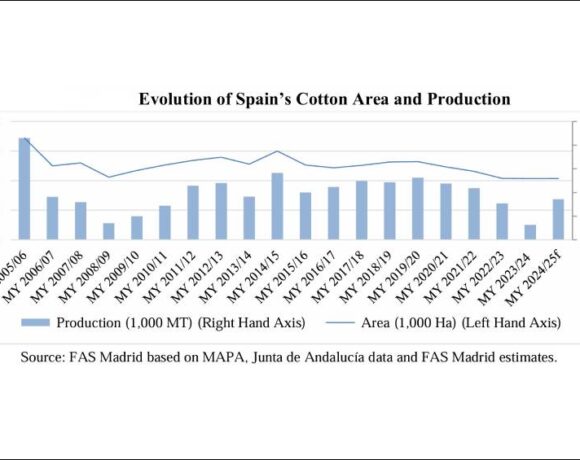Better Cotton Network Of Indian Farmers Rises To One Million

Better Cotton which recently released its 2023 India Impact Report said the organisation’s network of farmers has expanded from tens of thousands to almost one million.
The India Impact Report charts the performance of Indian cotton farmers in the Better Cotton Programme from the 2014-15 season through to the 2021-22 season.
The report shows a dramatic reduction in the use of pesticides and highly hazardous pesticides (HHPs) by Better Cotton Farmers across India.
From the 2014-17 seasons, used as a three-season average to the 2021-22 season, overall pesticide use reduced by 53 percent as a result of the adoption of capacity strengthening trainings.
Specifically, the number of farmers using HHPs was cut from 64 percent to 10 percent, whilst those using Monocrotophos, a pesticide classed as highly toxic by the World Health Organization, dropped from 41 percent to just 2 percent.
Nitrogen application, which drives greenhouse gas emissions in cotton production when used excessively, decreased by 6 percent per hectare
The report also highlights significant field-level progress in reducing water use, in addition to improvements on farmer livelihoods and equality.
Water usage for irrigation was reduced by 29 percent between the baseline years and the 2021-22 season.
On farmer livelihoods, results indicator data between the 2014-15 to 2021-22 cotton seasons has shown that total costs per hectare (excluding land renting) decreased by 15.6 percent in 2021-22 compared to the three-season average, driven by expense reductions for land preparation and fertiliser expenses.
In 2021, Better Cotton Farmers also had an average cotton lint yield per hectare of 200 to 650 kg per hectare above the national average.
On women in cotton, meanwhile, there has been an overall increase in the number of women Better Cotton field staff across India.
In the 2019-20 cotton season, around 10 percent of field facilitators were women, rising to over 25 percent in the 2022-23 cotton season.
Since the first Better Cotton harvest in India in 2011, the country has been a pioneering force within the Better Cotton Programme.
“We are buoyed by the results in this Impact Report, which demonstrate the environmental, social and economic benefits of Better Cotton production, and remain committed to driving further improvements at the farm-level,” Better Cotton CEO Alan McClay said.














